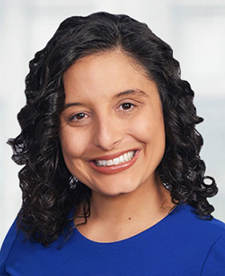School systems across Minnesota are shifting their focus from surviving the pandemic crisis to helping students recover from the social, emotional, and academic toll of the most significant disruption to K-12 education in history. That process will take years — but the choices educators make as they plan for the upcoming school year will be crucial.
One choice that looms especially large is how to help students who’ve fallen behind academically get back on track for their post-high school goals. New research from our organizations points to a promising approach: learning acceleration. School systems across Minnesota should consider this as a key component of their academic strategy.
When students fall behind, a common approach is to go back and re-teach significant amounts of material from earlier grades before moving on. For example, at the beginning of third grade, a teacher would review all second-grade math content the students missed before moving on new third-grade math learning. This is known as remediation. While this approach makes sense and is driven by a desire to help students succeed in their learning, we’ve found in our work across that country that it often causes students to fall even further behind—and can exacerbate racial inequities.
Learning acceleration is a fundamentally different approach that has started to gain traction across the country. Instead of starting the school year going back and reviewing weeks – or even months – of second-grade math lessons, a third-grade teacher would start with third-grade math content, and strategically bring in key second-grade concepts when students demonstrate the need. This “just-in-time” targeted support helps students make connections in the context of new learning – the key to catching up and moving forward.
New research, gathered from more than 2 million students in more than 100,000 elementary math classrooms who used Zearn’s online math software this past fall, provides strong evidence that learning acceleration is the right approach. The research showed that students who experienced learning acceleration in math completed 27% more grade-level lessons than those who experienced remediation. Just as important, when they experienced just-in-time learning acceleration support, they struggled less with that grade-level work — debunking the idea that remediation “protects” students from becoming frustrated with work that’s too hard. The research shows that when we give students the chance to tackle challenging grade-appropriate problems, and give them strategic support when they demonstrate they need it, all students can succeed.

[image_caption]Mya Baker[/image_caption]

[image_caption]Shalinee Sharma[/image_caption]
Minnesota’s children are resilient. And if we give them both the opportunity and support they need, they will soar.
Mya Baker is the vice president, Midwest, of TNTP, an education nonprofit that helps school systems across the country end educational inequality and achieve their goals for students. Shalinee Sharma is the CEO of Zearn, an a nonprofit organization whose online math platform is used by one in four elementary students nationwide.
WANT TO ADD YOUR VOICE?
If you’re interested in joining the discussion, add your voice to the Comment section below — or consider writing a letter or a longer-form Community Voices commentary. (For more information about Community Voices, see our Submission Guidelines.)






“New research, gathered from more than 2 million students in more than 100,000 elementary math classrooms who used Zearn’s online math software this past fall, provides strong evidence that learning acceleration is the right approach. ”
That link to New research shows no research. It sends you to a page that yes tells you how wonderful Zearn is. Where’s the “research” ?
I’m with Raj here. I can’t even tell what this is. Maybe I have a different expectation when someone tells me about some research.
Well, one of the authors IS the CEO of ZEARN . . . . . . .
You have to click on “Download Report” to get a PDF of the study.
https://tntp.org/assets/documents/TNTP_Accelerate_Dont_Remediate_FINAL.pdf
The concept makes total sense. In the IT world there is an overload of information presented at every level, some of which applies to the next level, and some of which doesn’t. I’ll cite most Microsoft documentation on any mundane topic which is excessive and considers all possibilities, 2-5% of which are applicable to the task at hand.
Knowing every detail is a waste of resources and far more efficient is to refer back to missing pieces when working on a higher level issue. Information is instantly more available to new generations than in years past. The goal is to “get” how things would work at the next level, the zen is what’s important. (HT to Robert Pirsig – Zen and the Art of Motorcycle Maintenance.)
Going to vote for moving forward with this.
This concept definitely makes sense. A lot of times being able to complete grade-level work is hampered by not knowing one crucial step in the process. Teaching that one step in real time (rather than slowly reviewing everything else up to that point) so the student can go on to the more interesting and keep up with their classmates would be beneficial.
The major roadblock to this is probably funding, as more tutors and assistants to pull students aside is likely necessary.
Duh….. You mean go back to teaching children by their competence, advanced learning for advanced kids, remedial learning for lower level learners? What a novel idea…. One size fits all works at absolutely nothing, why would it work on children?